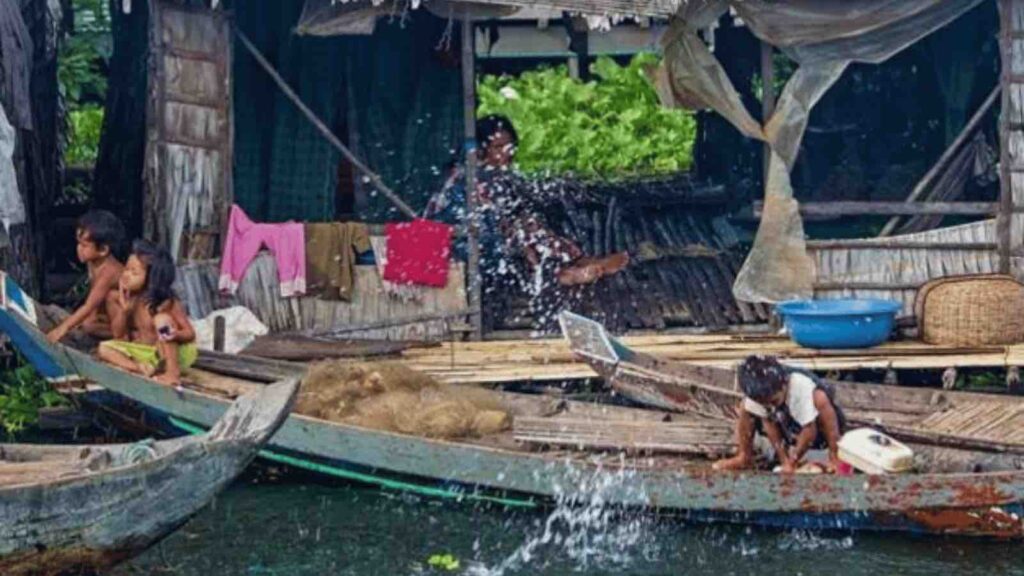The floating villages embody a profound understanding that in the face of environmental upheaval, community-centric solutions, rooted in compassion and mutual support, are not just viable but essential.
In the heart of Cambodia, Lake Tonle Sap serves as a lifeblood and a stark indicator of climate change’s escalating threats. As the world grapples with extreme weather, the lake’s rhythmic yet volatile annual swelling from June to November poses both a challenge and a lesson in resilience. In Mechrey, a floating village of 2,000 inhabitants, adaptation is not just a strategy but a way of life.
RELEVANT SUSTAINABLE GOALS


Life Afloat: A Dance with Nature
In Mechrey, buildings rest on bamboo rafts or metal barrels, each unique in design yet uniform in their communal openness. Life unfolds in a shared space, where personal and social activities blend seamlessly, offering a glimpse into a community where resilience is intertwined with daily existence.
Education in Mechrey is as fluid as the lake itself. The village school, a series of floating buildings, is just the beginning. Here, learning spills out into the open waters, where children are active participants in the village’s daily choreography. They steer boats with seasoned ease, their youthful hands confidently gripping the oars, their eyes alight with the wisdom of the waterways.
In this aquatic world, boats are more than a means of transport; they are vital connectors, linking Mechrey to the rest of Cambodia. Each boat, with its small engine and elongated propeller, is a testament to the villagers’ ingenuity, allowing them to navigate the lake’s moods and depths.
Mechrey’s economy is a mosaic of community and innovation. The lake provides not just fish but sustenance for floating farms where shrimp, crocodile, and catfish thrive alongside lush greenhouses. In times of abundance and scarcity alike, the village finds ways to adapt, turning to the land only for essentials like fuel and ice.
Culture Amidst the Currents
The village’s cultural life, too, is afloat. A Buddhist pagoda and a crematorium sit on tiny artificial islands, while a floating Christian church and a Korean dining barge add to the tapestry. Here, religious and cultural practices coalesce, anchored in the shared experience of life on water.
In Mechrey, everyone plays multiple roles – fisherman, parent, caregiver. This fluidity is more than a survival tactic; it’s a philosophy. In a world where resources are finite, collective strength emerges as the village’s most valuable asset.
Mechrey’s story is a microcosm of a planet in flux. As the world faces rising sea levels and unpredictable climate patterns, this floating village offers profound lessons. In its adaptive architecture, community-centered education, and collective spirit, Mechrey stands as a model of resilience.
Here, amidst the ebb and flow of Tonle Sap, life thrives not in spite of nature’s whims but because of them. Mechrey teaches us that in the heart of vulnerability lies strength, in the rhythm of the waters, wisdom. As the world looks to COP28 for global solutions, perhaps it’s these floating villages, with their intricate dance of adaptation and community, that hold the key to our collective future.
Lead image courtesy of Klook.


